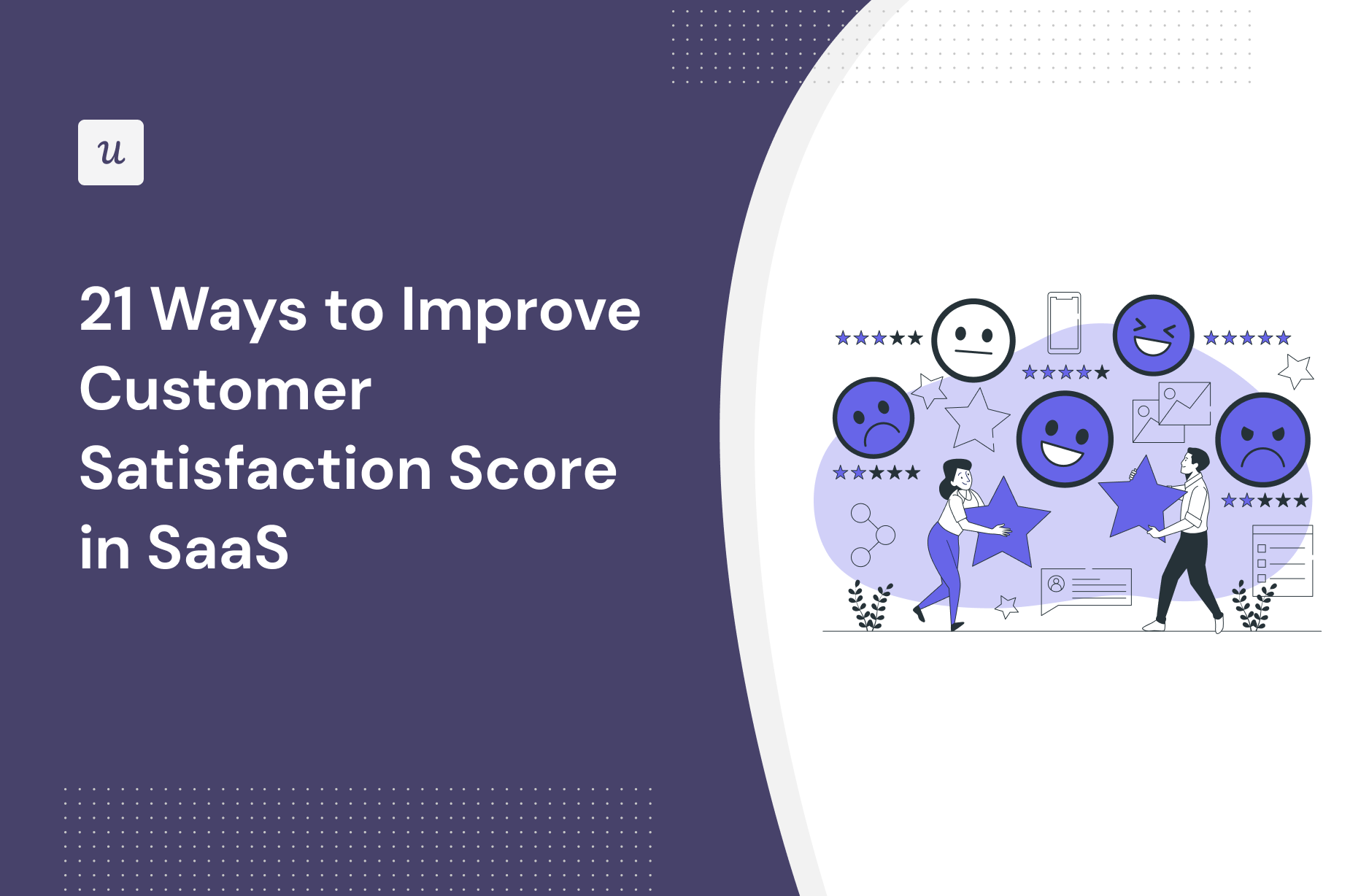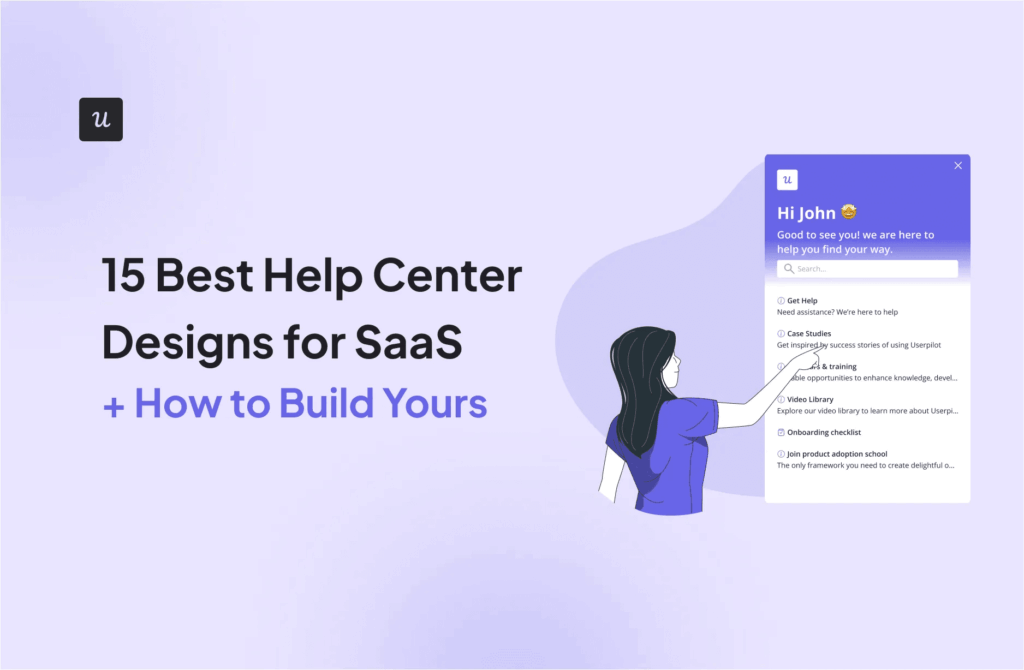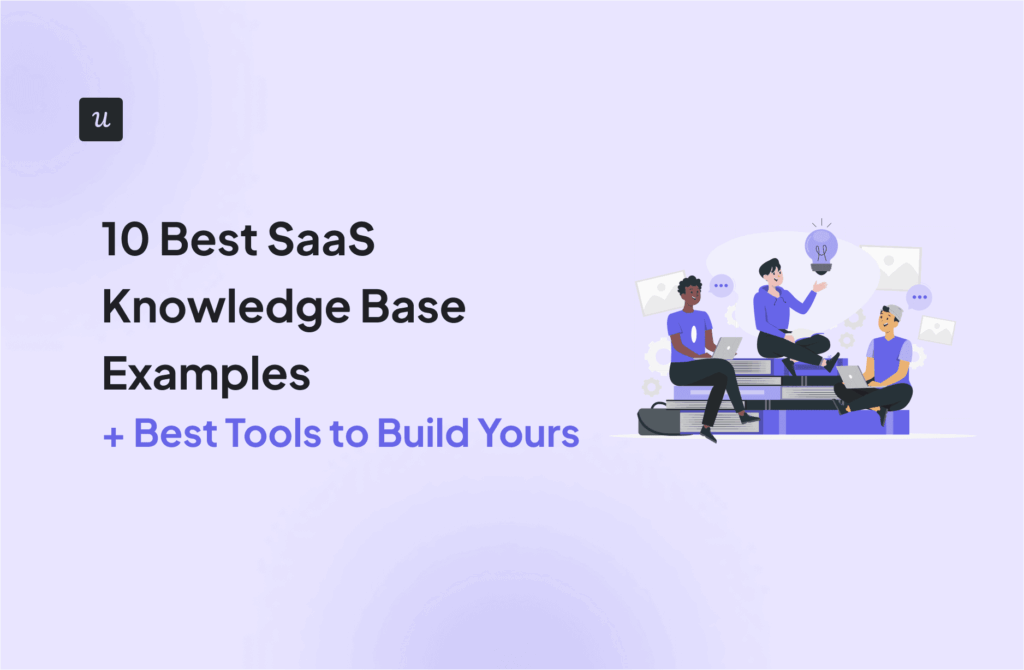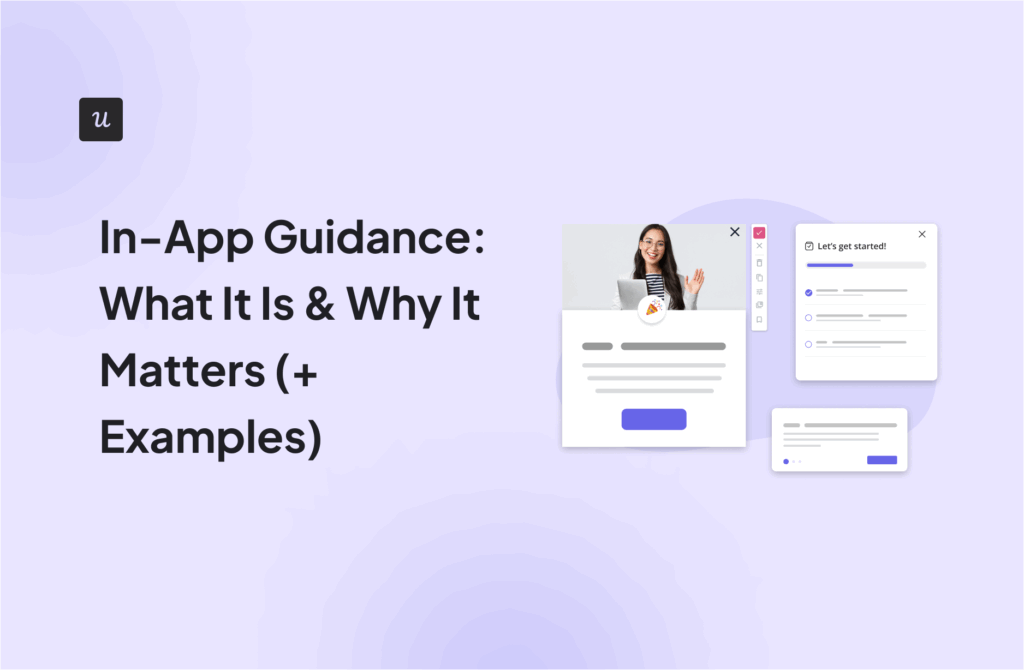
Wondering how to improve customer satisfaction and boost loyalty?
You clicked on the right link. This article shows you 21 proven strategies you can implement. As you read on, you’ll also find the right tools to collect customer feedback, keep track of your analytics, and spot ways to delight users.
Get The Insights!
The fastest way to learn about Product Growth, Management & Trends.
1. Map your customer journey with key customer touchpoints
Begin your satisfaction score optimization by understanding how users interact with your product.
Use a visual whiteboarding tool like Miro to break the customer journey into clear stages—for example, sign-up, onboarding, activation, regular use, and renewal.
Within each stage, pinpoint every interaction point, including website, email, help center, in-app elements, and the like. Aim to identify friction points as users progress through the different journey stages and implement proactive solutions.
Customer journey mapping.
2. Identify happy paths to key actions
Also known as the golden path, a happy path is the ideal, frictionless journey users take through your product to achieve their desired outcomes.
One way to identify the happy paths in your tool is to analyze how satisfied customers use your product. Take note of the features they interact with and the critical tasks they perform. Then, encourage more users down the same paths.
Example of a happy path.
3. Offer a personalized onboarding experience
Use welcome surveys to collect user data upfront. Ask them basic questions about their roles, what they plan to use your software for, and any other relevant questions. Just ensure to keep the survey short to avoid overwhelming new users.
Use the data to segment users and inform your onboarding process.
Provide customized content, features, and workflows for each segment, addressing their specific needs. This strategy will reduce the time to value and speed up adoption rates as users will see your tool meets their needs.
Here’s a welcome survey example from Kontentino. Notice how the questions are brief and come from a deep understanding of the product and target audience.
Kontentino’s welcome survey.
4. Guide new users with an interactive product walkthrough
An interactive walkthrough is a step-by-step, in-app guide that helps users learn to navigate and engage with your product.
What makes walkthroughs effective is the fact that they’re designed to help users learn by taking action. Users won’t see the next flow in the guide until they’ve completed the task required for the current flow.
This helps new users learn the product’s ropes quickly and efficiently, boosting confidence and increasing customer satisfaction.
Create interactive walkthroughs and other onboarding elements with Userpilot.
5. Use an onboarding checklist to shorten time to value
An onboarding checklist breaks down the key tasks users need to complete to drive activation.
Having a list your users can see and tick helps to keep them focused and motivated, speeding up the time to value.
For extra effect, use the data from your welcome survey to personalize the checklist. This ensures users only see the tasks relevant to them.
Build onboarding checklists with Userpilot and improve customer satisfaction scores.
6. Use gamification to engage customers
Gamification provides an extra boost to complete in-app activities. It also helps to increase customer satisfaction as users will have something to look forward to in your product.
From in-app elements to batches, challenges, and milestones, there are many ways to infuse gamification into your customer experience.
For instance, adding a progress bar to your checklists (the example above) is a form of gamification.
Another example: a magical creature appears each time new users hit an onboarding milestone in Asana. This leaves users wondering what celebratory creature will show up next, so they keep engaging.
Asana using onboarding gamification to improve customer satisfaction.
7. Leverage self-service support with an in-app resource center
An in-app resource center helps users independently troubleshoot their issues and learn more about your product.
With a few exceptions, a resource center often solves customer problems faster than contacting a customer care agent. Also, just knowing there’s a portal they can always visit when confused helps to increase customer satisfaction.
How to build an effective resources center:
- Organize content logically: Group articles, FAQs, and tutorials by topic and subtopic for easy navigation.
- Prioritize clarity and conciseness: Use simple language, visuals, and screenshots to explain concepts clearly and effectively.
- Update content regularly: Ensure your resources are accurate and reflect the latest product features and functionalities.
Build your resource center with Userpilot.
8. Provide proactive customer support
Proactive support means you don’t wait for customer queries. You anticipate user needs and offer assistance even before they complain.
How to do this?
Utilize historical data and user behavior patterns to identify potential issues. Then, offer in-app guidance or tutorials to address these issues. If your developers need to fix something, try to have it done as soon as possible.
9. Collect feedback to identify dissatisfied customers
Customer surveys triggered in time can help you identify dissatisfied customers before they churn.
Conduct regular customer feedback surveys so you don’t miss any potential issues. Trigger the surveys after key interactions like engagement with your support portal or when users interact with a feature for the first time.
You can also have an always-on feedback widget that tells users they can provide feedback any time they want.
Common survey types for collecting customer feedback include customer effort score, Net Promoter Score, and customer satisfaction surveys.
Of course, it’s not just enough to spot issues through surveys. Analyze the customer survey data, fix recurring complaints, and close the feedback loop by telling users you’ve addressed their problems.
Collect customer feedback at scale with Userpilot.
10. Constantly measure customer satisfaction levels
CSAT surveys will help you measure customer satisfaction levels and spot UX changes to make.
Trigger the surveys regularly and keep track of the customer satisfaction scores to see if you’re improving over time.
Some examples of questions you can ask:
- How satisfied were you with the onboarding process?
- Which features of our product do you find most valuable?
- On a scale of 1 to 5, how satisfied are you with [feature]
- Was it easy to find information in our help center?
Measuring customer satisfaction with a CSAT survey.
11. Offer omnichannel support to improve customer experience
While a resource center helps users resolve issues independently, some things just need to be discussed with the customer support team.
When it’s time to reach you, give customers multiple options—email, phone, live chat. Different options will improve customer satisfaction with your service because they won’t be boxed into using an option they dislike.
12. Provide excellent customer service experience
Beyond resolving issues, prioritize exceeding customer expectations with proactive assistance, personalized interactions, and a positive attitude.
Train and equip your customer service teams to provide superior customer service. One way around this is to have SOPs for new, churning, and existing customers. This way, your reps are properly informed on how to deal with each user group and avoid poor customer service resulting from misinformation.
13. Use AI and ML to speed up ticket resolution
Utilize chatbots, AI-powered virtual assistants, and machine learning algorithms to improve the speed and efficiency of customer support.
Add frequently asked questions and common friction points to your chatbot menu to allow users to choose what best describes their issues. Train your AI to recommend relevant knowledge-based articles based on user inputs.
Notion uses a chatbot to improve the customer experience.
14. Use continuous onboarding for new feature releases
Drive customer satisfaction by introducing new features that address user needs.
However, don’t just roll out features and assume customers will find them. Trigger secondary onboarding flows to tell users about the features and how to use them.
One of the best ways to do this is to use an in-app modal or banner to announce the feature. Then, trigger an interactive walkthrough when users click the modal/banner. Keep your guides short and engaging to boost adoption rates.
Build secondary onboarding flows without writing a line of code.
15. Incorporate empathy in your UX design
Design your features and enhancements with the end user in mind. Ensure the UI is easy to navigate, accessible, and helpful.
You can conduct user research to learn more about customer expectations, needs, and pain points when interacting with your tool. Use the data to create an empathy map that aids your design process.
Empathy map.
16. Prompt users to explore complimentary features
Track product usage and find relevant features that different user segments aren’t engaging with.
Then, prompt contextual upgrades or provide complementary services to add more value to customers. By helping users achieve more with your product, you can revitalize engagement and improve customer satisfaction.
Loom’s upgrade prompt.
17. Host webinars to help loyal customers get more value
Host regular webinars (weekly or monthly) with product experts to walk users through more ways they can use your product.
You can even invite power users as guests. By seeing the experience of actual users, your customers will be motivated to engage more.
Userpilot holds regular webinars featuring product experts and thought leaders. The one in the image below was held in December 2023, but you can always access the recording and sign up for incoming webinars.
Watch on-demand webinars on user onboarding and PLG best practices.
18. Send email newsletters to share new features and product tips
Email newsletters are a valuable tool for ongoing engagement and customer education. Just ensure what you send is valuable enough to have customers opening and reading.
Choose a frequency you’re comfortable with. Monthly or biweekly emails are a good balance. Sending emails multiple times weekly will overwhelm users, and doing it once in a blue moon will reduce engagement levels.
Keep your newsletters personalized and valuable. Some content to have in the emails include feature release announcements, tips and tricks, and resources related to the user’s job-to-be-done.
While you want to ensure many users read your emails, also make it easy to opt-out. Making the unsubscribe process too complex isn’t a good way to keep users engaged—you’ll have the opposite effect instead.
Example from Userpilot’s newsletter.
19. Use funnel analysis to identify and remove friction
Identify the key stages or steps users go through in their journey toward a specific goal or conversion.
Then, utilize tools like Userpilot to monitor user interactions at each funnel stage. Dig into the funnel reports to spot where users drop-off or abandon the funnel—that’s a sign of friction or dissatisfaction. Investigate the reasons behind drop-offs and look for opportunities to optimize the customer experience, improve messaging, or streamline processes to enhance user flow.
Conduct funnel analysis like this with Userpilot.
20. Create loyalty programs to boost customer loyalty
Loyalty programs encourage repeat purchases and engagement, reducing churn and increasing customer lifetime value.
Begin by deciding what you want to achieve with your program. Common goals include renewals, account expansion, and referrals. Having a clear objective from the get-to makes it easy to measure performance.
For rewards, provide special discounts or offers like early access to new features. Ensure the program rules and benefits are communicated clearly, and participation is seamless for users.
Don’t forget to monitor program metrics like engagement rates, redemption rates, and customer churn reduction to assess effectiveness and identify areas for improvement.
Dropbox uses a customer loyalty program as part of its strategy to keep improving customer satisfaction.
Valuable tools to boost customer satisfaction score in SaaS
Access to the right tool is a critical part of increasing customer satisfaction. Below are three software products to facilitate the process:
Userpilot – Best for user research and onboarding flows
Userpilot is an all-in-one product growth tool that helps brands improve customer experience and satisfaction.
Our platform enables you to conduct in-depth user research, create personalized onboarding flows, and track in-app behavior.
Key features:
- User surveys: Use NPS, CSAT, and other surveys to gather direct customer feedback. This will help you understand their experience, needs, and preferences, showing you changes to implement and increase customer satisfaction. Userpilot lets you get specific with your surveys—you can determine who sees what and when.
- Funnel analysis: Visualize how users move through key conversion funnels (signup, onboarding, feature adoption, etc.) to pinpoint drop-off points and optimize the journey. You can analyze funnel performance based on user segments (e.g., free vs. paid plans, industry, role) and make data-driven decisions.
- Path analysis: See how users navigate between features and pages, including path lengths and most frequent routes. You can determine your happy paths from the path analysis report and direct users to take them.
- Onboarding flows: Create personalized and interactive guides to introduce new users to your product, highlight key features, and drive adoption. All without coding!
- Onboarding checklists: Increase onboarding completion rates with gamified checklists showing the key tasks users need to complete.
Hotjar – Best for tracking user sessions
Hotjar is a product experience insights platform that helps you understand how users interact with your website or app.
Key features:
- Session recordings: Watch real user sessions to understand how people interact with your platform and identify pain points.
- Heatmaps: See where users click, scroll, and move their mouse, revealing areas of interest and potential confusion.
- Customer feedback widgets: Strategically place these on your website or app and easily capture customer feedback in real-time.
Session recordings with Hotjar.
Hubspot – Best for user journey tracking
You can access Hubspot’s customer journey reports from the Marketing Hub.
This feature allows you to visualize and analyze the touchpoints your prospects and customers experience throughout their interaction with your brand. The report shows you metrics like drop-off rates, conversion rates, and average time spent at each stage. Such insight is valuable in understanding user engagement and spotting ways to improve customer satisfaction.
User journey analytics with Hubspot.
Conclusion
The best strategy for driving customer satisfaction is to pay attention to their needs, expectations, and preferences. Once you find a way to understand these, improving customer satisfaction becomes easier—it will just be a matter of applying contextual solutions.
Userpilot can help you uncover customer pain points through in-app surveys and product analytics. Our platform also equips you to provide the necessary solutions to improve customer satisfaction. Book a demo now to get started.


























